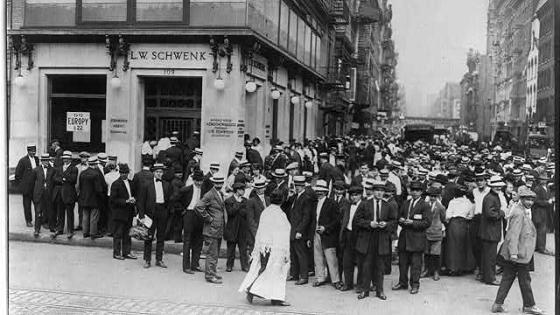DP6146 Real Origins of the Great Depression: Monopolistic Competition, Union Power, and the American Business Cycle in the 1920s
Most treatments of the Great Depression have focused on its onset and its aftermath. In contrast, we take a unified view of the interwar period. We look at the slide into and the emergence from the 1920-21 recession and the roaring 1920s boom, as well as the slide into the Great Depression after 1929, and attempt to explain these phenomena in a unified framework. The model framework combines monopolistic product market competition with search frictions and bargaining in the labour market, allowing for both individual and collective (unionized) wage bargaining. We attribute the extraordinary macroeconomic and financial volatility of this period to two factors: Shifts in the wage bargaining regime and in the degree of monopoly power in the economy. The pro-union provisions of the Clayton Act of 1914 contributed to the slide in asset prices and the depression of 1920-21, while a series of tough anti-union Supreme Court decisions in late 1921 and 1922 coupled with the lax anti-trust enforcement of the Coolidge and Hoover administrations enabled a major rise in corporate profits and stock market valuations throughout the 1920s. Landmark court decisions in favour of trade unions in the late 1920s, as well as political pressure on firms to adopt the welfare capitalism model of high wages, made the economy increasingly susceptible to collapsing profit expectations. We model the onset of the great depression as an equilibrium switch from individual wage bargaining to (actual or mimicked) collective wage bargaining. The general equilibrium effects of this regime change are consistent with large decreases in output, employment, and stock prices.


